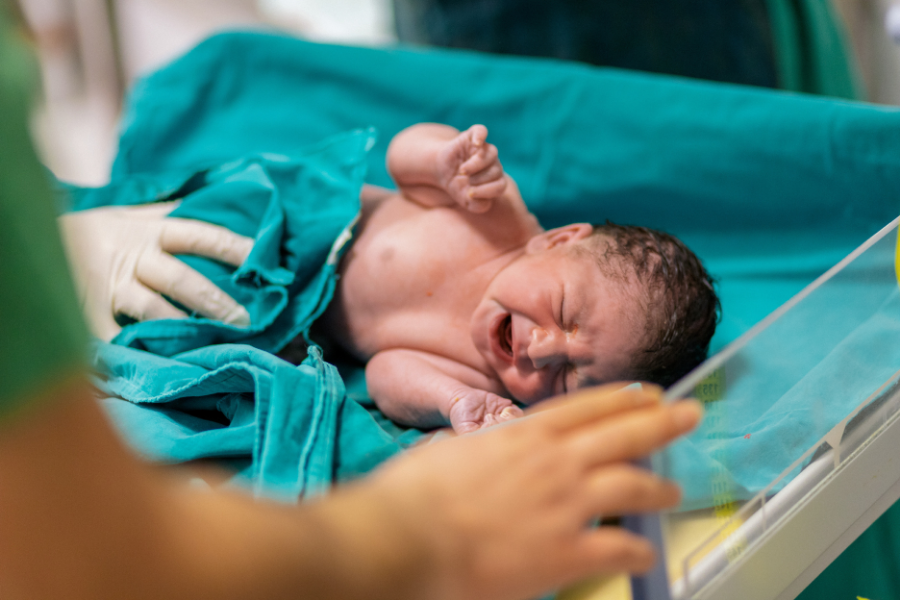In parts of rural America, especially in the Deep South and Midwest, giving birth is becoming increasingly difficult—not because of a lack of people, but because of a growing lack of places to deliver. Over the past few years, a quiet but deeply troubling trend has emerged: many small-town hospitals are shutting down their labor and delivery units, forcing expectant mothers to travel long distances—sometimes more than an hour—just to give birth.
In rural Alabama, this crisis is already a harsh reality. When the hospital in Thomasville closed entirely, it left residents without even emergency care nearby. Prior to its closure, the hospital hadn’t had a delivery unit for years, yet women still showed up in labor, hoping for help. Nurses had to improvise during emergencies, doing everything possible to keep mothers and newborns alive while waiting for specialists from faraway hospitals.
These stories are becoming more common across the country. Since 2020, more than 100 rural hospitals have shut down their obstetric units. Today, fewer than 1,000 rural hospitals in the U.S. still offer labor and delivery services. On average, two such units close every month.
So what’s driving the decline?
A Perfect Storm
The causes are complex but interconnected. Birth rates are declining in many rural areas, making it financially unfeasible for hospitals to maintain expensive, round-the-clock maternity services. Obstetric units require specialized staff, including physicians able to perform emergency cesarean sections, anesthetists, and trained nurses. Whether they’re needed or not, these staff must be on call 24/7—an expensive fixed cost for hospitals with only a handful of births each month.
Add in staffing shortages, especially in remote areas, and the situation worsens. Many doctors don’t want to be on call constantly, and those trained in both general and obstetric medicine are increasingly hard to find. In some regions, the closure of an OB unit means there might be only one or two doctors left who can handle childbirth at all.
For smaller hospitals, especially those not generating profits from other services, continuing to operate an obstetric unit is often a financial impossibility.
The Fallout
When a rural hospital shuts down its delivery services, the ripple effects are immediate and serious. More women end up giving birth in emergency rooms, often in facilities not equipped for labor. Some choose to schedule early inductions or cesarean sections to avoid risking a long drive during labor—decisions that come with their own health risks.
There’s also a broader impact on maternal and newborn health. Areas without local delivery services tend to see higher rates of preterm births, inadequate prenatal care, and complications during delivery. Support services that usually come with a full OB unit—like postpartum care, mental health support, lactation counseling, and access to midwives or doulas—often vanish along with the delivery rooms.
Ambulance services, already stretched thin in rural areas, are feeling the pressure too. Transporting laboring women over long distances can tie up emergency vehicles and staff for hours, creating gaps in care for the wider community.
What Can Be Done?
There’s no one-size-fits-all solution, but many agree that financial reform is essential.
Medicaid covers nearly half of all rural births, making it a critical source of funding for maternity care in small communities. However, Medicaid reimbursement rates are typically low, and when funding is cut—or even threatened—rural hospitals are among the first to feel the squeeze.
Some states have experimented with allowing freestanding birth centers or bringing urban-based doctors into rural clinics, but these efforts haven’t been enough to reverse the overall trend.
Experts argue that private insurance companies also need to step up. In many areas, these insurers pay even less than Medicaid for births, placing an additional burden on already struggling hospitals. Increasing these rates—or at least ensuring they cover the actual costs of providing care—could help stabilize the situation.
Ultimately, saving rural maternity care will require action from both public and private sectors. Whether through Medicaid reform, insurance regulation, or new care models, something has to change—or more families will be left facing longer drives, riskier births, and fewer options when it matters most.
As one healthcare leader put it: every rural hospital has its own story, but the theme is the same—too many are being forced to choose between staying open and bringing new life into the world.


